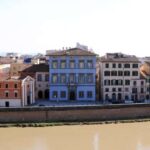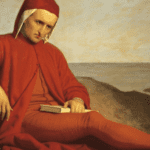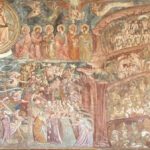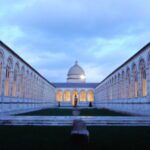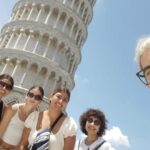Pisan Gothic sculpture. Gothic art originated in Northern France around the middle of the twelfth century and soon spread throughout Europe becoming the predominant artistic movement until about the fifteenth century.
Around the fifteenth century it left room for a new artistic language that had its epicenter in Italy but that soon spread throughout the continent: the Renaissance.
The Gothic style was an artistic current of great diffusion and interested all sectors of artistic production and, in particular, architecture.
Here we will focus on Gothic sculpture and painting, the Gothic architecture on our territory we have already addressed it in the article: The Gothic in Pisa: The Piazza dei Miracoli
The subjects of Gothic art
In the sculpture there was a recovery of the plasticity and sense of volume of human figures, so we have the first all-round statues that almost seem to come out of the stone.
The predominant theme was still the religious one, but with greater realism and a search for a return to classical-Roman models.
As for Gothic painting, in Italy it is fundamental, in the second half of the thirteenth century, the work of Giotto.
From that moment there was a rapid and rapid development of Gothic painting that was characterized by different elements: the stylization of the figures, the abundance of decorative elements, the size of the characters in relation to their own importance, the search for depth.
The main subjects were still the sacred ones, but a new focus is also paid to landscapes and still lifes.
Pisan Gothic Sculpture: Piazza dei Miracoli – The pulpit of Giovanni Pisano
Pisan Gothic sculpture is very present, both in religious and secular buildings, as it develops during the golden years of the city of Pisa as a Maritime Republic.
We start our journey from the city’s most famous square, Piazza del Duomo from where all our tours depart and inside the main building, namely the Cathedral of Santa Maria Assunta.
Inside the Duomo we have one of the most representative examples of Gothic style in sculpture, the Pulpit by Giovanni Pisano, son of Nicola Pisano (in which he began and learned to work together with Arnolfo di Cambio), and in which he worked there from 1302 until 1310.
The work was saved from the fire of 1595 that destroyed most of the wooden works inside the Church, and on that occasion it was dismantled to be reassembled and relocated to the current position only in May 1926 in the presence of Benito Mussolini and Archbishop Pietro Maffi.
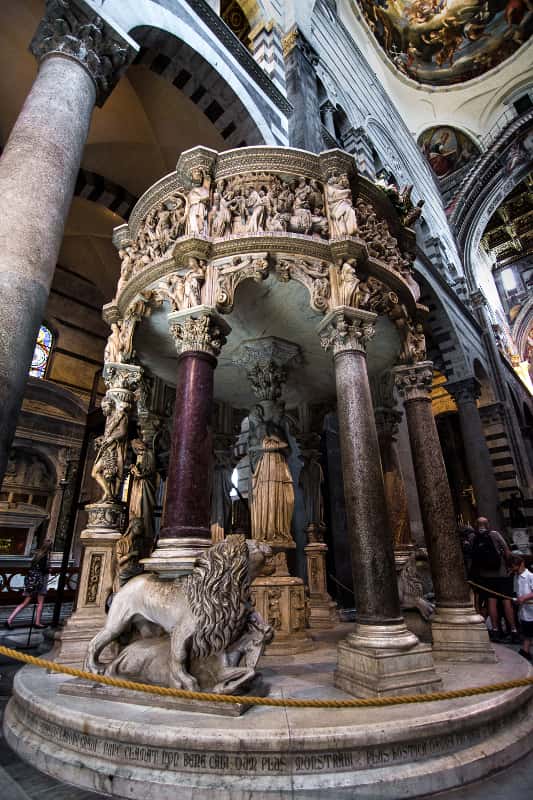
We note that the pulpit has not only a circular plant, but Giovanni manages to imprint a circular pattern on the whole complex.
In fact, even the plutei are rounded, there are no edges between one scene and another making the reading more smooth.
On the round base of 1926 there are eleven columns, five simple while the others formed by statues representing various symbols of religion, from the Theological and Cardinal Virtues to the figure of Jesus.
The nine plutei instead represent scenes of the Life of Christ, from the Annunciation to the Last Judgment, the only scene divided into two panels with the figure of Christ in the center.
If you stop to look carefully at the tiles and characters, you will notice how a great heat of gestures and emotions animate and shake the complex and agitated scenery.
These gestures give life to a masterpiece of Pisan and European Gothic sculpture in which faith and beauty, biblical dictate and touching restitution of human passions find complete synthesis in the disruptive and masterful expressive force of Giovanni Pisano.

Pisan Gothic Sculpture: Museum of the Opera del Duomo
To deepen the Gothic sculpture and therefore the work of Giovanni Pisano we recommend that you visit the Museo dell’Opera del Duomo.
Reopened in the autumn of 2019 after 5 years of renovation and redevelopment of the spaces, it preserves and collects works from the monuments of the Square, often replaced by copies to safeguard the originals.
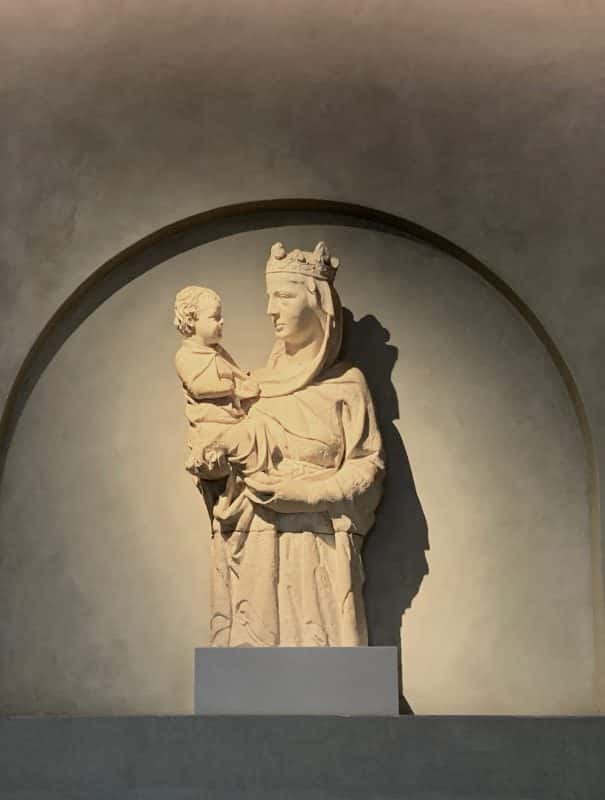
Inside the Museum there are two entire rooms dedicated to the sculptor in which we find you:
- the so-called graduations, i.e. a series of rectangular marble encass in which animals, human heads and other ornamental motifs are carved, and which covered the perimeter of the Cathedral as a decoration for the heavy stepped base;
- the Madonna del Colloquio coming from the western portal of the south transept of the Duomo which presents a rare half-figure cut in medieval sculpture and which is particular for the emotional transport of the gaze between the figures and their pose;
- the Madonna and Child between St. John the Evangelist and St. John the Baptist and donor, the group coming from the lunette of the central portal of the Baptistery, was carved around 1300;
- and the Madonna of Henry VII, made in 1313 on the occasion of Henry VII of Luxembourg’s visit to Pisa, was placed in the outer lunette of the Porta di San Ranieri.
Of the work, heavily damaged, only two statues out of three are preserved, in a central position there is the Madonna and Child in a sitting position, to its left is the allegory of Pisa, represented as a crowned woman nursing two children.
